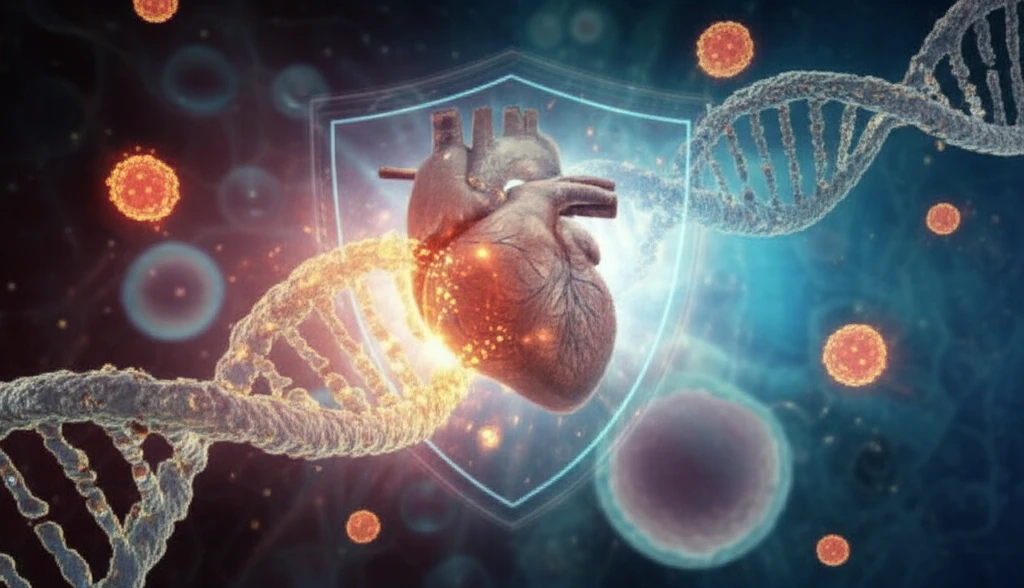
Unlock Your Heart's Natural Defense: How Immediate Early Response Gene X-1 (IEX-1) Can Protect You From Ischemic Damage
"Discover the groundbreaking research revealing how a specific gene, Immediate Early Response Gene X-1 (IEX-1), is crucial for shielding your heart from the devastating effects of ischemia and reperfusion injury."
When the heart experiences a sudden interruption of blood flow—a condition known as ischemia—it's a race against time. Restoring that blood flow, called reperfusion, is essential to save the heart muscle. But here’s the paradox: reperfusion itself can cause additional damage, a phenomenon known as reperfusion injury (RI). This injury occurs as the body attempts to restore normal function, often leading to further harm.
One key factor in reperfusion injury is the opening of the mitochondrial permeability transition pore (MPTP). Think of the MPTP as a gate in the energy-producing centers of your cells. When it opens under conditions of calcium overload and oxidative stress, it can trigger cell death. However, there's a protective mechanism: ischemic preconditioning (IPC). IPC involves exposing the heart to brief cycles of ischemia and reperfusion, which can guard against MPTP opening and, consequently, RI.
Scientists have long been exploring various signaling pathways involved in preconditioning. Protein kinase C (PKC) is one key piece of the puzzle. While the specific PKC isoforms involved are still debated, there's strong evidence that PKCɛ plays a significant role. The proposed mechanism suggests that mitochondrial reactive oxygen species (ROS) generated during IPC can activate PKCɛ, protecting the heart. Now, emerging research is exploring whether this PKC activation might be regulated by immediate early genes.
The Power of IEX-1: Your Heart's Overlooked Protector

Enter Immediate Early Response Gene X-1 (IEX-1), a stress-induced gene that’s rapidly upregulated in cells facing various challenges like irradiation, viral infections, and inflammation. IEX-1 is known to play a crucial role in cell survival under stress. Recent studies suggest that decreased IEX-1 expression is linked to increased apoptosis (cell death) in heart conditions like dilated cardiomyopathy. Plus, IEX-1 can regulate protein kinase activities, such as ERK and Akt, through interactions with protein phosphatase 2A (PP2A).
- IPC Boosts IEX-1: Ischemic preconditioning increases IEX-1 expression in the heart.
- IEX-1 Protects: Overexpressing IEX-1 reduces heart damage and improves heart function after ischemia/reperfusion.
- PKC Activation: IEX-1 promotes the activation and translocation of PKCɛ, a key player in cardioprotection.
- Reduced ROS: IEX-1 helps reduce the accumulation of harmful reactive oxygen species in heart cells.
The Future of Heart Health: Harnessing IEX-1
These findings open exciting new avenues for treating and preventing heart damage. By understanding how IEX-1 protects the heart, scientists can develop targeted therapies to enhance its expression or mimic its beneficial effects. This could lead to more effective strategies for reducing reperfusion injury and improving outcomes for individuals at risk of or experiencing ischemic heart conditions.
